Framing and composition play an important role in the production of videos, animations, and films. Every animated GIF or video we see today is made up of a succession of many scenes, and a Frame is one of those many scenes that compose a complete moving picture. A video that you play on the computer is nothing but a file that stores all frames together and plays them one after the other to make the audience see them as a moving picture.
Extracting a good frame from a video clip can be a daunting task especially if you are pausing the video clip for a screenshot. The screenshot tools help you to extract frames from a video, but this consumes a lot of time as well as diminishes the quality of an image. Fortunately, many applications assist in extracting a range of frames from a video clip and save them as image files – like png or jpeg while maintaining the same quality as the original video. In this article, we outline some of the incredible tools to extract frames from a video by retaining its original quality.
Extract Frames from a Video with high quality
We will walk you through some of the best ways with which you can extract frames from a video with high quality.
1] Use VLC Media Player
VLC Media Player is a popular media player used to play all types of video files. More importantly, they can be used to extract a range of frames from a video clip. Follow the below steps to extract sequences of images using VLC media player.
Launch VLC and go to Tools. Click Preferences from the drop-down menu. At the bottom of the Preferences window, select the option All under Show Settings.
In the Advanced Preferences window, Select and Expand Video. Click Filter and in the expanded menu, click Scene Filter.
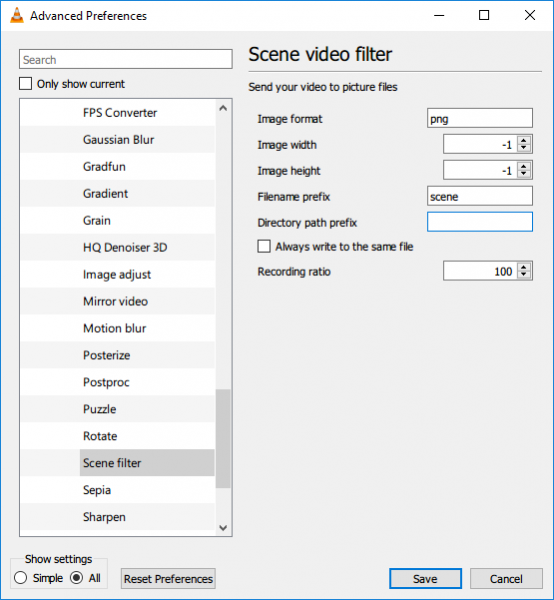
Set the image format, give the recording ratio and type the directory path. Click Save to apply the changes.
Now navigate to Filters and select the option Scene video filter to process the video stream.
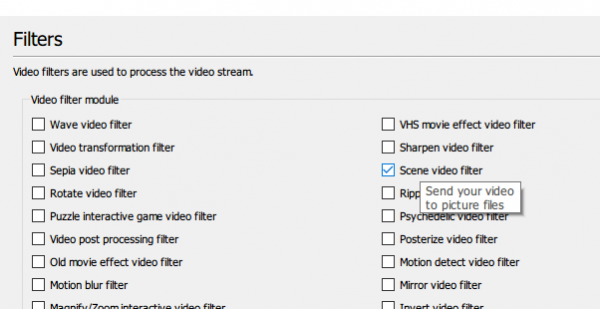
Click Save to apply the changes.
Now play the video clip from which you want to extract frames. The images will automatically start saving.
2] FFmpeg
FFmpeg is a popular command-line based program for processing, converting and manipulating video/ audio files. The program is simply awesome for extracting frames from a video clip, handling video and other multimedia files. FFmpeg enables you to extract frames from a video clip with a single-line command. It can be used to extract frames from any video file. Follow below steps to use FFmpeg
Add FFmpeg to the Windows path. Open the Command prompt and Run as administrator.
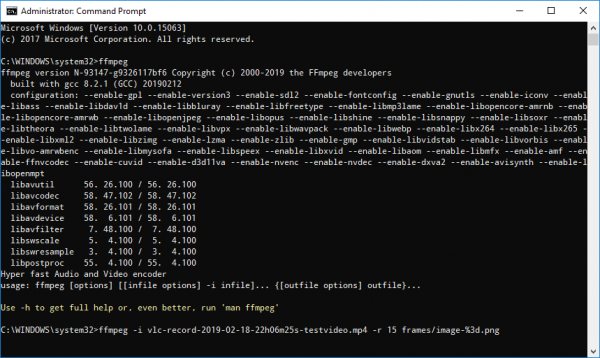
Type the following command to extract frames from a video
ffmpeg -i YourVideoFilename.mpg -r 1 image-%04d.png
- i indicates input video file and its path.
- r indicates frames to capture and reverse of how you want it to work
- 1 indicates that the command will save a frame every second. Replace 1 by 0.5 to save frame every 2 seconds, replace 1 by 0.2 to save frame every 5 seconds and so on.
- .png is the filename with which it saves images from a video clip. You can use jpeg, tiff, bmp and other image file extension to save the frames.
3] Free Video to JPG Converter
Free Video to JPG Converter is an ideal program for extracting frames from a video clip with a single click. The extracted frames are saved as JPG image files. The tool is free to download and is supported by Windows 11/10 and all older versions.
Launch the tool and click Add files to upload video files.
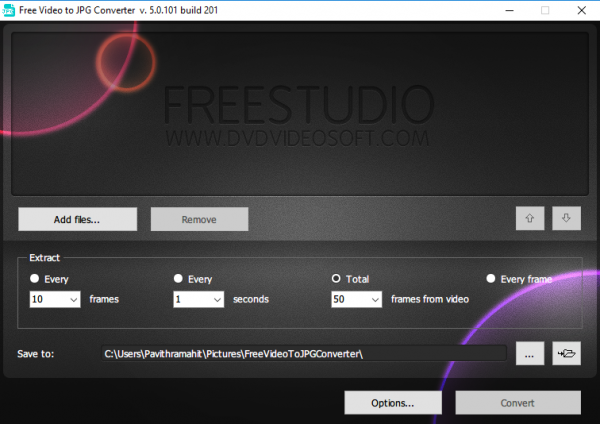
Set the appropriate numbers for frames, seconds and total frames from video. Once you mention all the extract details, click Convert.
The program will take a while to create your requested frames and is saved in your desired folder.
You can download this program here.
4] GOM Player
GOM Player is a free media player used to play all types of video files. It is a lightweight program that supports various video file formats like AVI, MOV, MKV, MOV, etc. GOM video player can also be used to extract a range of frames from a video clip. Follow the below steps to extract sequences of images using GOM media player.
Launch the media player and open the video file of your choice. Click the Control Panel at the bottom of the window to open Screen capture options.
Click Screen Capture to capture the image of a frame without pausing the video.
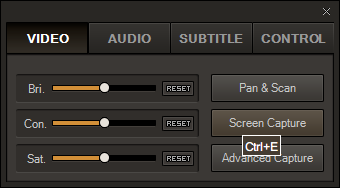
To access more options, click Advanced Capture.
Set the appropriate image format, JPEG quality, burst capture images, and burst interval.
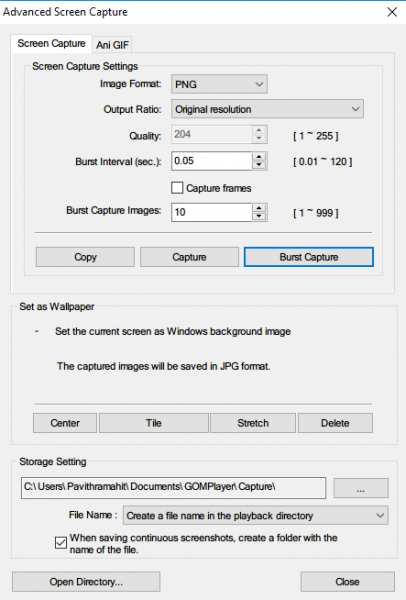
Click Burst Capture to capture a sequence of frames from a video clip.
Which is your favorite tool to extract frames from a video file?
Leave a Reply